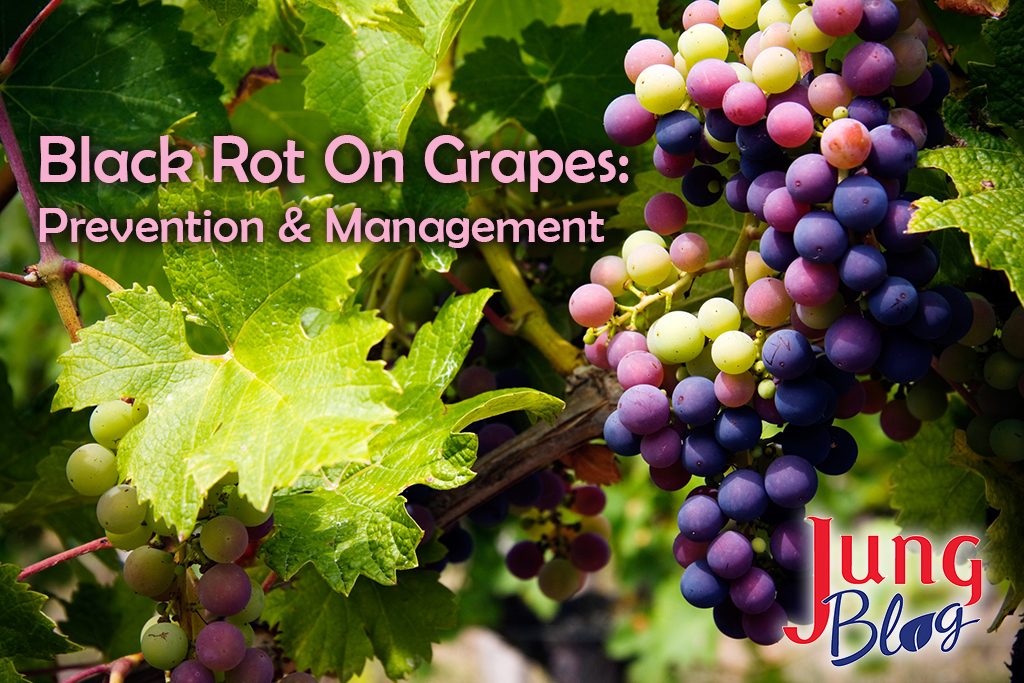
Black Rot, the most widespread disease of grapes, often causes grapes to turn brown and shrivel. It is extremely difficult to control and is the number one enemy of commercial growers and home gardeners alike. This article will help guide you to identifying, preventing, and management of Black Rot on grapes.
What Is Black Rot?
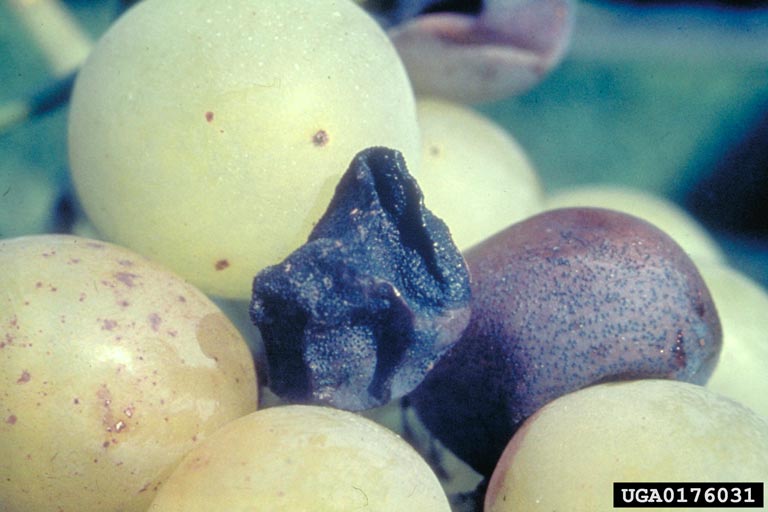
Black Rot is the most common fungal disease grapes can get. It is caused by the fungus Guignarida bidwellii. It is a cumulative disease, meaning it builds up for multiple seasons and can very often spread, undetected by many growers until it is a major problem.
When Is Black Rot Likely To Occur?

Most prevalent in warm humid weather, this disease can cause a complete crop loss if proper precautions are not taken. Many grape cultivars have some resistance but still require a few applications of recommended fungicide sprays during wet periods. Cultivars that have large fruits or mature early in the season are the most susceptible.
What Does Black Rot Look Like?
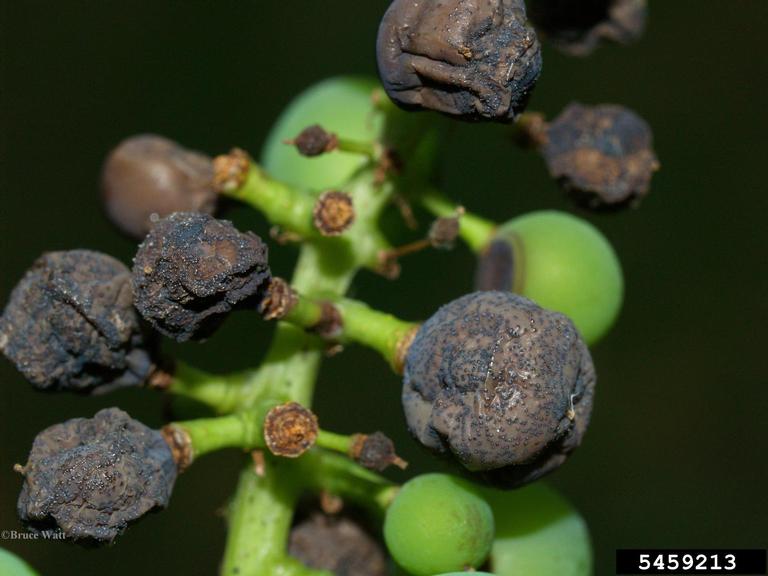
Symptoms of black rot may first appear on the leaves as small light tan spots with circular centers and darker tan margins. Fruit symptoms do not appear until the berries are half grown. Then berries turn brown and rapidly shrivel, becoming small, black, and hard. These dried, diseased grapes are referred to as “mummies”.
What Do I Do If I See Infected Grapes?
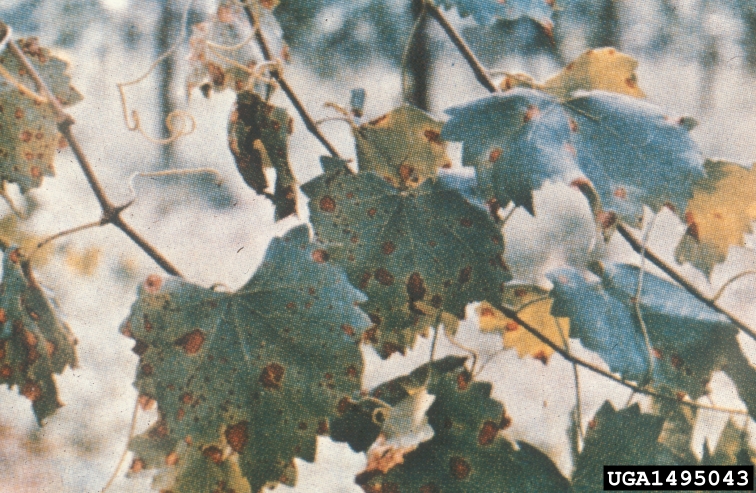
Once black rot is observed, very little can be done that season. Sanitation becomes the most critical factor to limit the effects of future infections. Once fruits are severely and noticeably infected, understand that the disease has already been there for some time, so it will take an equal amount of time to suppress it. At this point, the best course of action is to remove and throw away all of the fruits ASAP to begin to halt the progress of this pathogen.
How To Prevent Black Rot On Grapes?
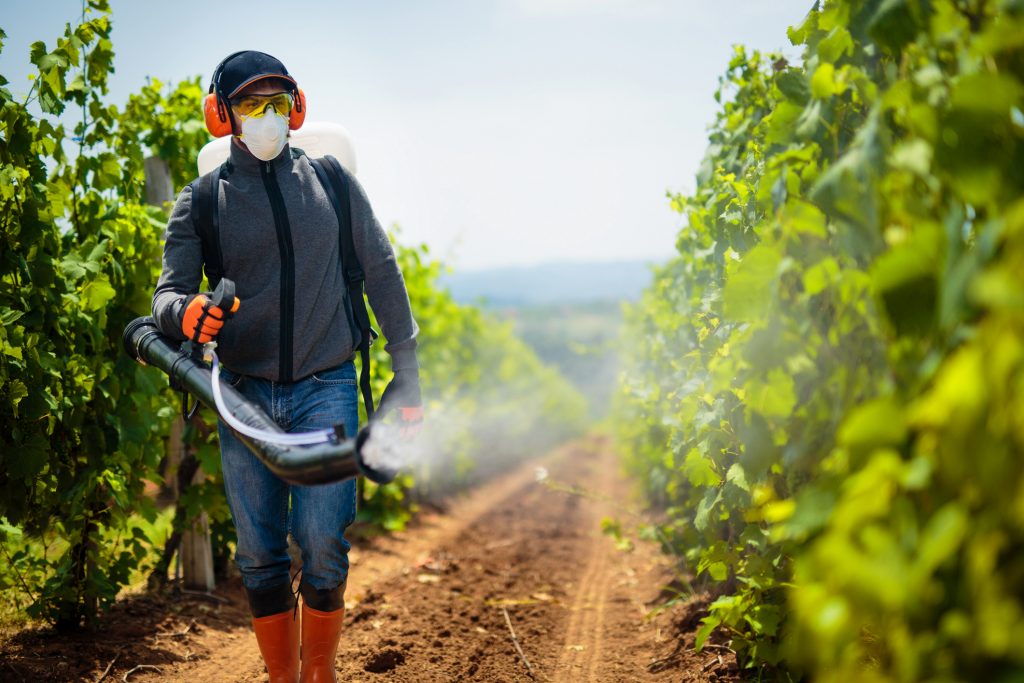
Here are our top four suggestions to help you reduce the incidence of black rot in the future.
Sanitation
Practice excellent sanitation. When black rot appears, begin sanitation cleanup at once, writing off the current crop. Collect and destroy all fruit, because infected mummies will be a source of infection next year. Mummies can fall into vine bundles or to the ground and be easily obscured by turfgrass. Lawn areas under vines should be carefully raked and cleaned up.
Removing Stems
In late winter, just before buds begin to break open, remove all of the previous season’s fruit-bearing stems, which can harbor disease, and begin a spray program.

Location, Orientation, & Pruning
Make sure you provide good air movement around and in between the vines. Select a sunny open area and use proper row orientation. Perform proper yearly pruning.
Fungicide Spraying
Use fungicides as soon as shoots begin to emerge from the vine. During wet weather, applications should not be more than seven to 10 days apart. Spray regularly until pre-fruit ripening, even in the rain, if necessary, to maintain the schedule. Captan, Copper fungicide or Neem oil can be used. It is helpful to rotate two fungicide products during the season spray intervals, alternating with each. Try not to spray the same product twice in a row.
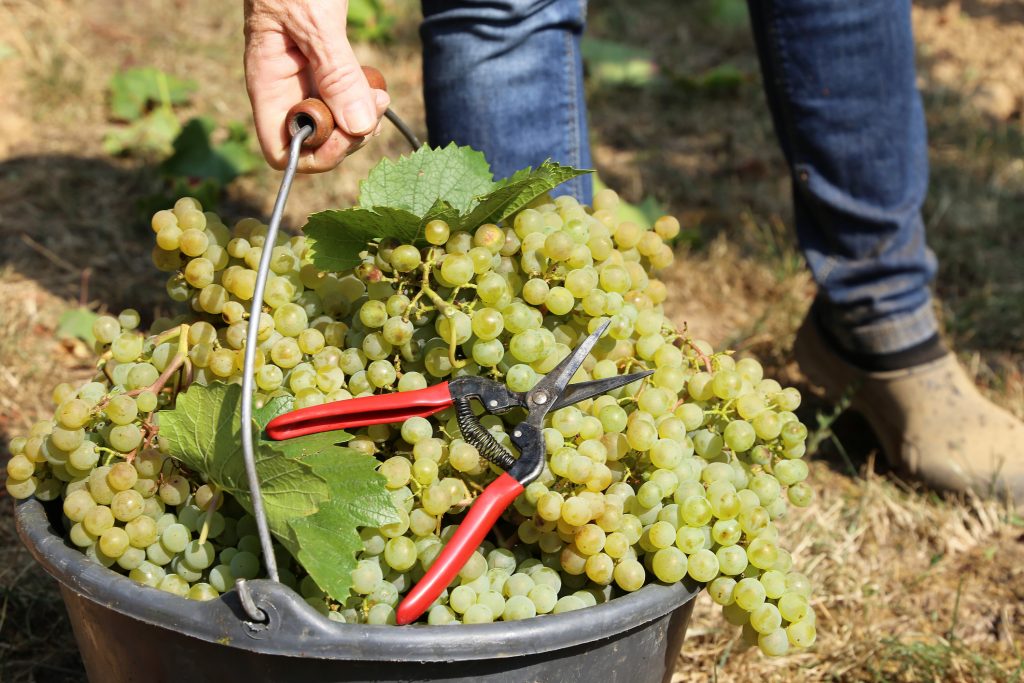
You must be vigilant with your protocols to prevent the spread of Black Rot on your grapes. Once you have your routine, it will become easier to keep your grapes healthy. In general, growing grapes can be a challenging endeavor, however, the fruits of your labor are well worth it.

View our new Summer/Fall catalog online or browse our website for all of your gardening favorites. To receive info on new products, exclusive deals, and specials, be sure to sign up for our weekly email. Join our Facebook page, to discuss all things gardening!
